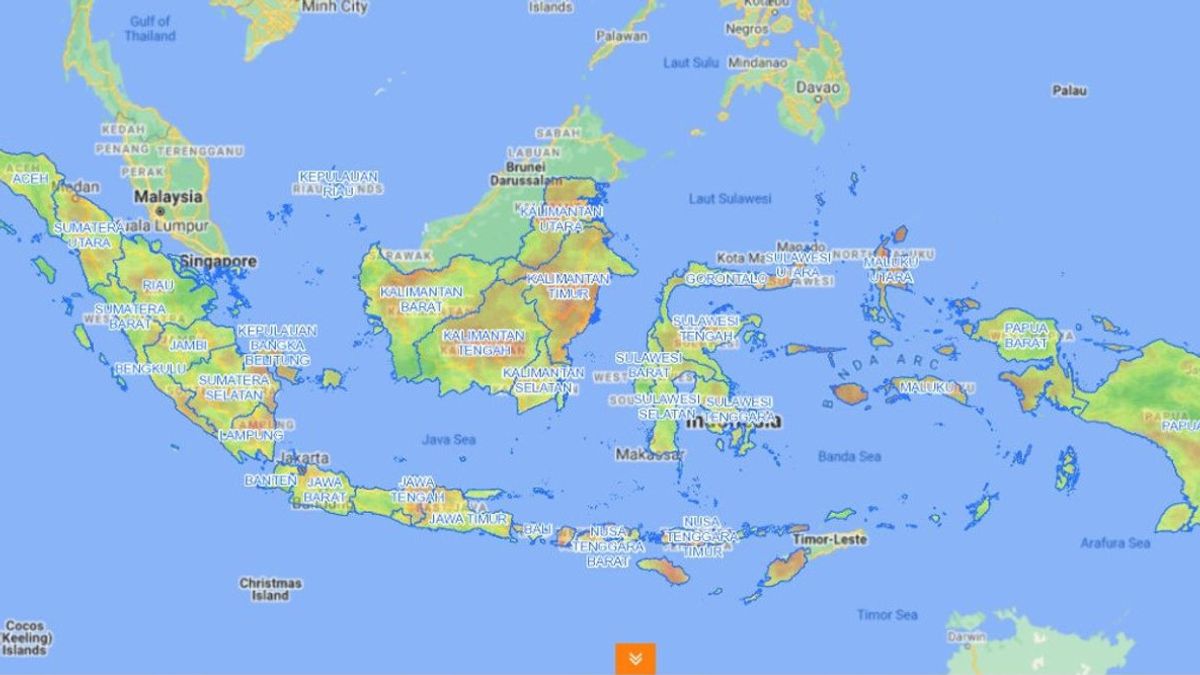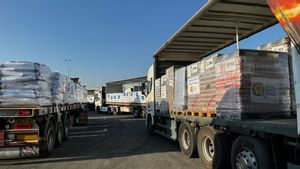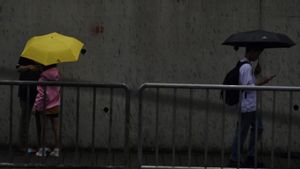JAKARTA - The Meteorology, Climatology and Geophysics Agency (BMKG) asked the Ministry of Social Affairs to anticipate the worst scenario of an earthquake and tsunami, one of which has the potential to occur in Pacitan Regency, East Java.
Head of BMKG Dwikorita Karnawati said that this potential is because on the map, Pacitan Regency is close to a bay that collects high wave energy and is relatively close to the location of the epicenter of the earthquake, so it can be said to be a red zone.
"For example, a map of the Pacitan area, East Java, the red color shows waves 10-14 meters high, the redder the higher the waves, the yellow color waves are 2-3 meters, and the green color is half a meter wave," said Dwikorita when Social Minister Tri Rismaharini said. directives on disaster preparedness online quoted by Antara, Wednesday, July 21.
BMKG stated that there were 10 scientific studies related to disaster prediction which were described in a map to make it easier to understand with three colors, namely red, yellow and green.
In the case of Pacitan Regency, access from the red zone to the green zone is probably the fastest via a flowing river. Unfortunately, if a tsunami occurs, the river, according to Dwikorita, has the potential to increase the impact of regional damage.
Therefore, a route is needed that can integrate residents in the red zone so that they can evacuate themselves to the green line. Dwikorita asked that all levels in the region can build earthquake-resistant infrastructure as a evacuation route for residents.
Dwikorita reminded that the evacuation infrastructure should not be strong enough to deal with disasters like what happened in Palu City, Central Sulawesi.
He said that the evacuation infrastructure for residents in Palu had actually been prepared since 2009-2015 and all elements of society were prepared to face natural disaster situations, starting from the mayor, Bapeda, the Spatial Planning Service, schools and other related parties.
However, because it was not strong enough to withstand earthquake shocks, infrastructure, such as bridges, collapsed. As a result, many children and adults who have learned how to evacuate themselves become victims, because they do not know what to do when the evacuation infrastructure is badly damaged.
There are four strategic steps for disaster preparedness described by Minister of Social Affairs Tri Rismaharini that need to be implemented as soon as possible.
The four steps are studying the local wisdom of the population to facilitate evacuation, collaborating with parties related to public communication when communication is lost, not underestimating BMKG forecasts.
In addition, the ranks of the Ministry of Social Affairs and the Office of Social Affairs are asked to understand the needs of local residents who are at risk of the impact of disasters in order to reduce the victims of children, the elderly, and people with disabilities.
"I agree with what the Minister of Social Affairs said regarding strategic disaster preparedness, and also the need to prepare buildings designed to withstand earthquake shocks of up to 8.7 magnitude," he said.
The English, Chinese, Japanese, Arabic, and French versions are automatically generated by the AI. So there may still be inaccuracies in translating, please always see Indonesian as our main language. (system supported by DigitalSiber.id)











